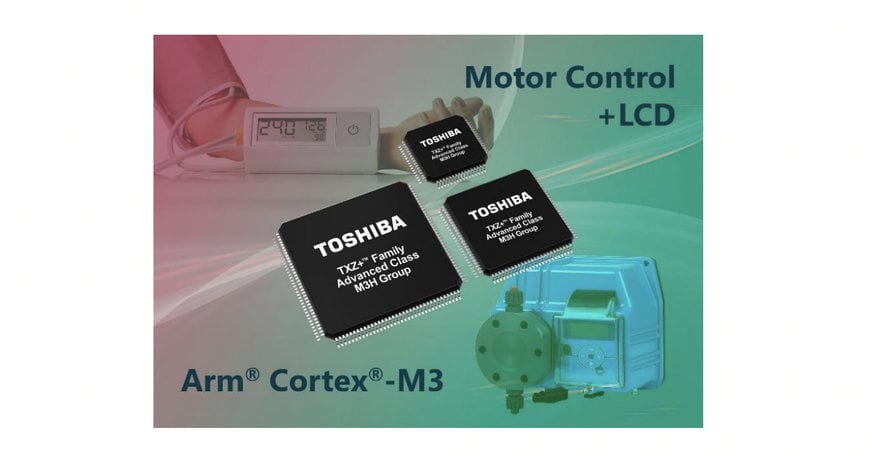electronics-journal.com
29
'22
Written on Modified on
TOSHIBA RELEASES NEW M3H GROUP OF ARM® CORTEX®-M3 MICROCONTROLLERS IN THE TXZ+TM FAMILY ADVANCED CLASS
Toshiba Electronics Europe GmbH has started mass production of 21 new microcontrollers in the M3H group as new products in the TXZ+ Family Advanced Class, manufactured in a 40nm process. The M3H group includes an ARM® Cortex®-M3 core running at speeds up to 120MHz, integrated 512kB code flash, and 32kB data flash memory with 100k write cycle endurance as well as 64kB of RAM.

These microcontrollers also offer various interface and motor control options, such as an encoder, and programmable motor driver. As a result, M3H group devices are suited for a wide range of applications including motors, home appliances, and industrial equipment.
In response to the diversity of consumer and industrial equipment, the new M3H group products have enhanced communications functions integrated as UART, TSPI, I2C, and a 2-unit DMA controller (DMAC). Moreover, a digital LCD driver is integrated to reduce the number of components for display function, facilitate contrast adjustment, and ensure a flexible board layout.
These devices support a variety of sensing applications with a high-speed, high-precision 12-bit analog/digital converter (ADC) that allows individual sample and hold times to be set for each of the 12 to 21 ADC input channels. In addition, they provide a solution suitable for controlling AC motors and brushless DC motors in combination with an onchip advanced programmable motor driver (A-PMD) circuit that can operate synchronously with the 12-bit analog/digital converter.
Also included within the highly integrated device is a dual-channel, 8-bit digital/analog converter (DAC) and up to 135 dedicated input/output (I/O) ports. Other peripherals include a remote-control signal preprocessor (RMC) and CRC calculation circuit. The self-diagnosis functions incorporated in the devices for ROM, RAM, ADC and Clock help customers to achieve IEC60730 Class B functional safety certification. All of the new microcontrollers operate from a voltage in the range 2.7 to 5.5V DC and are housed in high-density 64 to 144 pin LQFP packages.
Documentation, sample software with actual usage examples, and driver software that controls the interfaces for each peripheral can be downloaded from the Toshiba website: https://toshiba.semiconstorage.com/eu/semiconductor/product/microcontrollers/software-library/txzplusm3h-group.html
Evaluation boards and development environments are provided in cooperation with ARM global ecosystem partners.
www.toshiba.semicon-storage.com

